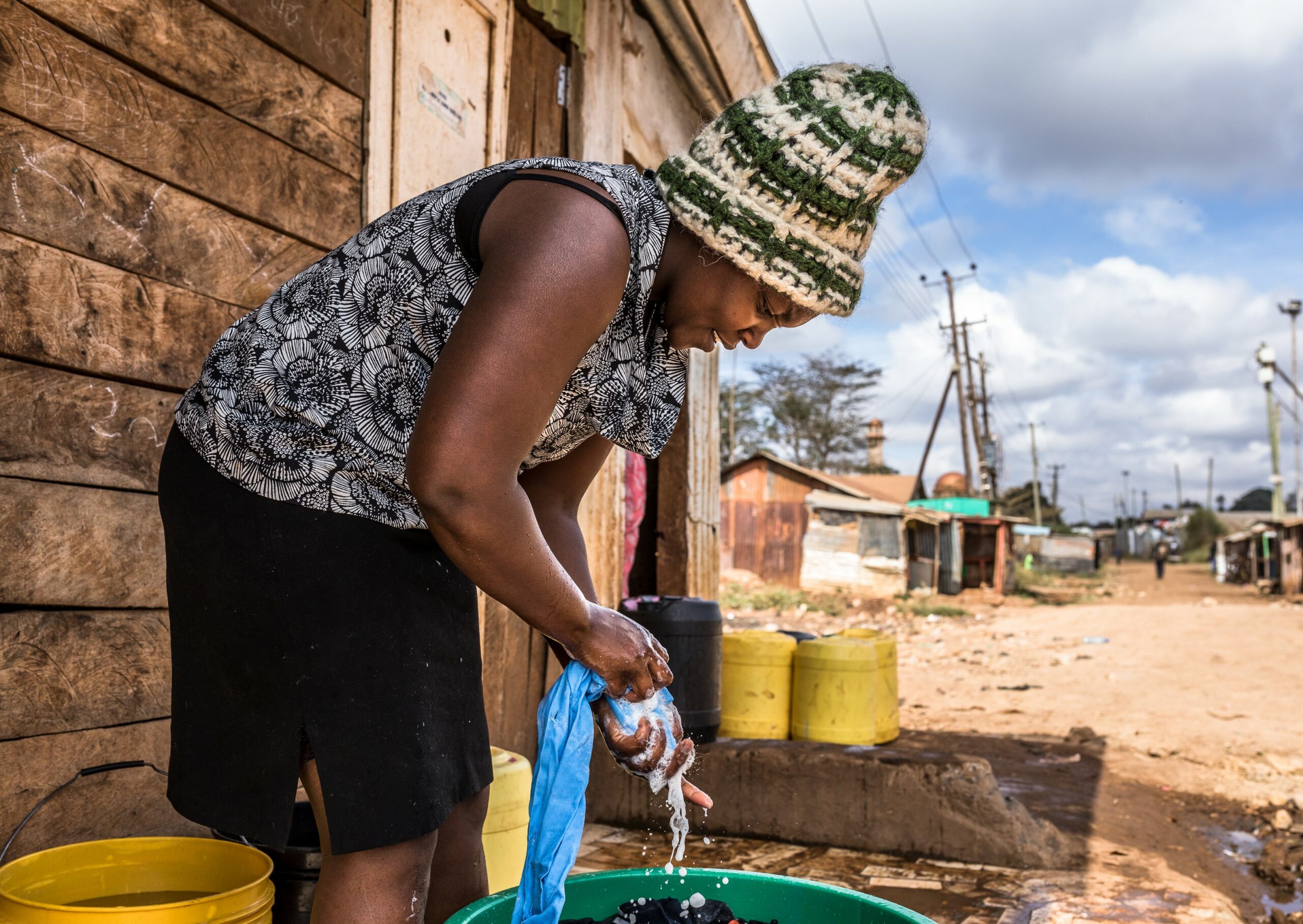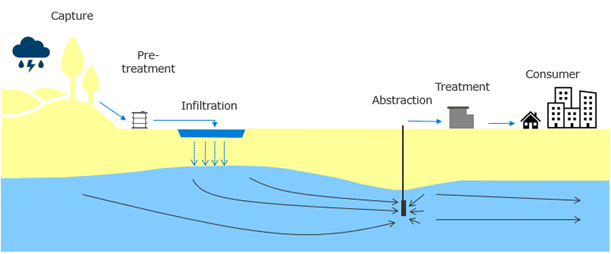MAR visualised
Surface water is captured during the rainy season. Then it undergoes simple treatment and is infiltrated into the ground. Here, it is stored as groundwater, which can be later pumped from a well and be distributed to the consumer.
News
P4G
Urban water management
Water management
+2


As highlighted by this year’s IWA World Water Congress, it is more pressing than ever to develop and fund water solutions that can create resilient and liveable cities. Climate change and growing urbanisation creates complex risks for cities, especially in regions where water scarcity is a baseline threat to the lives of residents.
One such region is Kenya’s coastal area around the city of Mombasa. Here, the current supply of potable water falls short of over 100,000 m3/ daily in Mombasa County alone, driving the city to implement water rationing during the driest period of the year. These periods have only become longer over time, and when rain falls, it is often intense and damaging.
However, making better use of the water from rainy seasons and flood events can be a significant part of the solution to the region’s water crisis. This is exactly the pathway that a new P4G partnership is pursu-ing. Together with local partners, Danish engineering, design, and consultancy company Ramboll will work towards establishing a so-called Managed Aquifer Recharge (MAR) plant – a solution with the potential to provide as much as 10 million m3 of clean drinking water yearly and improve the livelihood of the Mombasa area drastically.
MAR is the process of capturing excess run-off water and infiltrating it into aquifers, where it is stored as groundwater to be disbursed during dry periods. By doing so, the freshwater resources available in regions with highly variable and seasonal rainfall can be increased, while improving the overall resilience of the community’s water supply.
Surface water is captured during the rainy season. Then it undergoes simple treatment and is infiltrated into the ground. Here, it is stored as groundwater, which can be later pumped from a well and be distributed to the consumer.

The technique itself has been around for a long time, but utilising flood water specifically, as Ramboll and their partners plan to do in Mombasa, is an innovative approach. The clear benefit is that you increase the water supply by only using water that would otherwise be lost to the ocean, all while mitigating the damage flooding could cause.
Despite the benefits, convincing people that flood water can be converted into drinking water is a hurdle that has hindered the solution from being adopted more broadly:
“A lot of times, people will think that if you take this water and infiltrate it, it is not going to be clean. “, says Dr. Paul Thorn, Ramboll’s Senior Consultant on the Replenish Coastal Cities in Kenya partnership.
However, as explicated by Dr. Paul Thorn, once you get over that hurdle, it becomes clear that MAR could be a transformative solution in communities like Mombasa.
Not having enough clean water is detrimental to Mombasa in several ways. Firstly, residents are forced to buy unsafe water from informal water vendors, often at extremely high prices. Secondly, it is a fundamental hindrance for regional economic development. Mombasa could be a very important harbour city, but the lack of clean water has prevented them from developing their harbour infrastructure. If this barrier was torn down, it could create vital economic opportunities:
“If you can increase the water supply, you are not only increasing the water availability to the people themselves, but you are increasing the availability of water to industry, which then can expand. As such, you suddenly have a foundation to create more jobs and improve the economic environment locally,” Dr. Paul Thorn says.
Crucially, while other solutions like dams and desalination are currently being pursued to meet the challenges in Mombasa, they run in to several sustainability issues upon further inspection:
“Compared to MAR, dams have a larger climate footprint because of the concrete and the transport of water over long distances. Dams are also more susceptible to drought conditions. We may have a whole ocean, but the problem with desalination is that it takes a lot of energy to desalinate the water. In Kenya, it would be an expensive solution,” Dr. Paul Thorn explains.
The costs for the development of MAR plants are considerably lower compared to these alternatives. It is estimated that groundwater from MAR will be less than US$1.00/m3, including the costs of infrastructure development, operation, maintenance, and delivery. It also has a long lifespan – around 40 years with the correct maintenance, according to Ramboll.
Simply put, MAR provides an economically competitive solution, increasing the available water for urban and peri-urban communities, while reducing energy consumption and helping to remove one of the pri-mary barriers to economic growth.
The P4G funding brings the Replenish Coastal Cities in Kenya partnership one step closer to making MAR a reality in Mombasa. The goal within the P4G funding period is to conduct a feasibility study to provide water suppliers and local authorities with potential sites for a MAR-plant, including a fully elaborated business model.

P4G is a global platform pioneering green partnerships to deliver inclusive and sustainable growth. As the national platform for P4G activities in Denmark, State of Green facilitates market-based partnerships between the public and the private sector.
Learn moreBy working with stakeholders including local authorities, utilities and local NGOs, the partnership aims to demonstrate the physical, social, and economic viability of a MAR-plant, allowing the idea to be applied in Mombasa, and potentially replicated elsewhere.
For Ramboll, engaging in a partnership like this is ultimately about using their expertise to assist and em-power local organisations and institutions to build more sustainable and resilient communities. As Dr. Paul Thorn says:
“When the idea comes from the locals themselves, it is not something that we are pressing upon them. We are interested in expanding on projects that actually increase the sustainability for water resources and make communities more robust.”
P4G has provided the Replenish Coastal Cities in Kenya partnership with US$100.000 in funding towards the feasibility study. Alongside Ramboll, the NGO Water & Sanitation for the Urban Poor and local utilities in Mombasa and Malindi are the primary partners engaged in the project.
solutions
Climate change adaptation
+4
Perspective
Sector coupling
+9